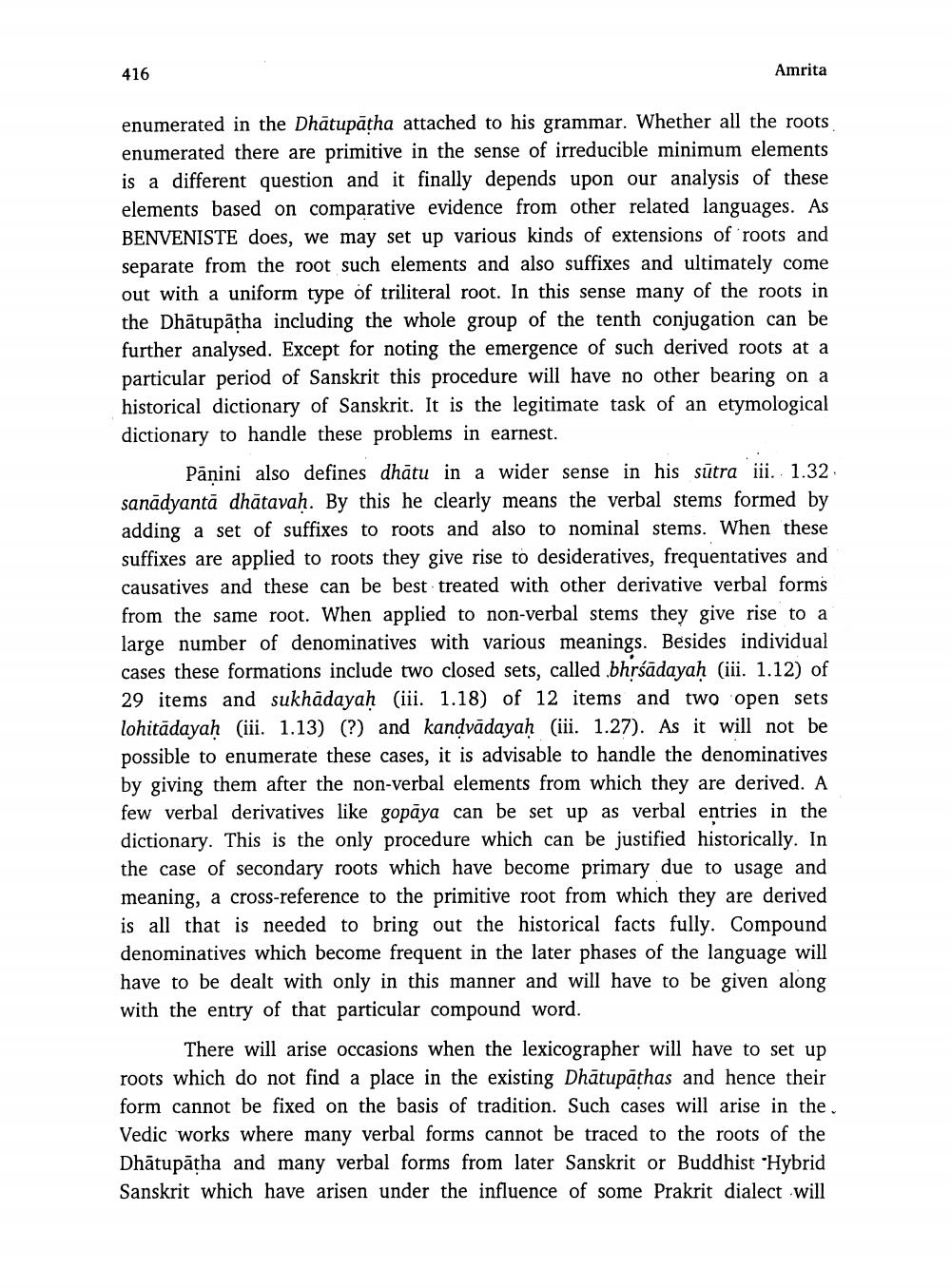________________
416
Amrita
enumerated in the Dhātupātha attached to his grammar. Whether all the roots enumerated there are primitive in the sense of irreducible minimum elements is a different question and it finally depends upon our analysis of these elements based on comparative evidence from other related languages. As BENVENISTE does, we may set up various kinds of extensions of roots and separate from the root such elements and also suffixes and ultimately come out with a uniform type of triliteral root. In this sense many of the roots in the Dhätupātha including the whole group of the tenth conjugation can be further analysed. Except for noting the emergence of such derived roots at a particular period of Sanskrit this procedure will have no other bearing on a historical dictionary of Sanskrit. It is the legitimate task of an etymological dictionary to handle these problems in earnest.
Pānini also defines dhātu in a wider sense in his sūtra iii. 1.32 sanadyantā dhātavaḥ. By this he clearly means the verbal stems formed by adding a set of suffixes to roots and also to nominal stems. When these suffixes are applied to roots they give rise to desideratives, frequentatives and causatives and these can be best treated with other derivative verbal forms from the same root. When applied to non-verbal stems they give rise to a large number of denominatives with various meanings. Besides individual cases these formations include two closed sets, called .bhróādayah (iii. 1.12) of 29 items and sukhādayah (iii. 1.18) of 12 items and two open sets lohitādayah (iii. 1.13) (?) and kandvādayah (iii. 1.27). As it will not be possible to enumerate these cases, it is advisable to handle the denominatives by giving them after the non-verbal elements from which they are derived. A few verbal derivatives like gopāya can be set up as verbal entries in the dictionary. This is the only procedure which can be justified historically. In the case of secondary roots which have become primary due to usage and meaning, a cross-reference to the primitive root from which they are derived is all that is needed to bring out the historical facts fully. Compound denominatives which become frequent in the later phases of the language will have to be dealt with only in this manner and will have to be given along with the entry of that particular compound word.
There will arise occasions when the lexicographer will have to set up roots which do not find a place in the existing Dhātupāthas and hence their form cannot be fixed on the basis of tradition. Such cases will arise in the Vedic works where many verbal forms cannot be traced to the roots of the Dhātupātha and many verbal forms from later Sanskrit or Buddhist "Hybrid Sanskrit which have arisen under the influence of some Prakrit dialect will




